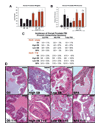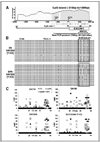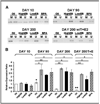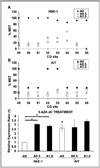Developmental exposure to estradiol and bisphenol A increases susceptibility to prostate carcinogenesis and epigenetically regulates phosphodiesterase type 4 variant 4
- PMID: 16740699
- PMCID: PMC2276876
- DOI: 10.1158/0008-5472.CAN-06-0516
Developmental exposure to estradiol and bisphenol A increases susceptibility to prostate carcinogenesis and epigenetically regulates phosphodiesterase type 4 variant 4
Abstract
Early developmental perturbations have been linked to adult-onset prostate pathology, including excessive exposure to estrogenic compounds; however, the molecular basis for this imprinting event is not known. An important and controversial health concern is whether low-dose exposures to hormonally active environmental estrogens, such as bisphenol A, can promote human diseases, including prostate cancer. Here, we show that transient developmental exposure of rats to low, environmentally relevant doses of bisphenol A or estradiol increases prostate gland susceptibility to adult-onset precancerous lesions and hormonal carcinogenesis. We found permanent alterations in the DNA methylation patterns of multiple cell signaling genes, suggesting an epigenetic basis for estrogen imprinting. For phosphodiesterase type 4 variant 4 (PDE4D4), an enzyme responsible for cyclic AMP breakdown, a specific methylation cluster was identified in the 5'-flanking CpG island that was gradually hypermethylated with aging in normal prostates, resulting in loss of gene expression. Early and prolonged hypomethylation at this site following neonatal estradiol or bisphenol A exposure resulted in continued, elevated PDE4D4 expression. Cell line studies confirmed that site-specific methylation is involved in transcriptional silencing of the PDE4D4 gene and showed hypomethylation of this gene in prostate cancer cells. Importantly, the PDE4D4 alterations in the estrogen-exposed prostates were distinguishable before histopathologic changes of the gland, making PDE4D4 a candidate molecular marker for prostate cancer risk assessment as a result of endocrine disruptors. In total, these findings indicate that low-dose exposures to ubiquitous environmental estrogens affect the prostate epigenome during development and, in so doing, promote prostate disease with aging.
Figures





References
-
- Dodds EC, Lawson W. Synthetic estrogenic agents without phenanthrene nucleus. Nature. 1936;137:996–997.
-
- Krishnan AV, Stathis P, Permuth SF, Tokes L, Feldman D. Bisphenol-A: an estrogenic substance is released from polycarbonate flasks during autoclaving. Endocrinology. 1993;132:2279–2286. - PubMed
-
- Quesada I, Fuentes E, Viso-Leon MC, Ripoll C, Nadal A. Low doses of the endocrine disruptor bisphenol-A and the native hormone 17β-estradiol rapidly activate the transcription factor CREB. FASEB J. 2002;16:1671–1673. - PubMed
Publication types
MeSH terms
Substances
Grants and funding
LinkOut - more resources
Full Text Sources
Other Literature Sources
Medical

